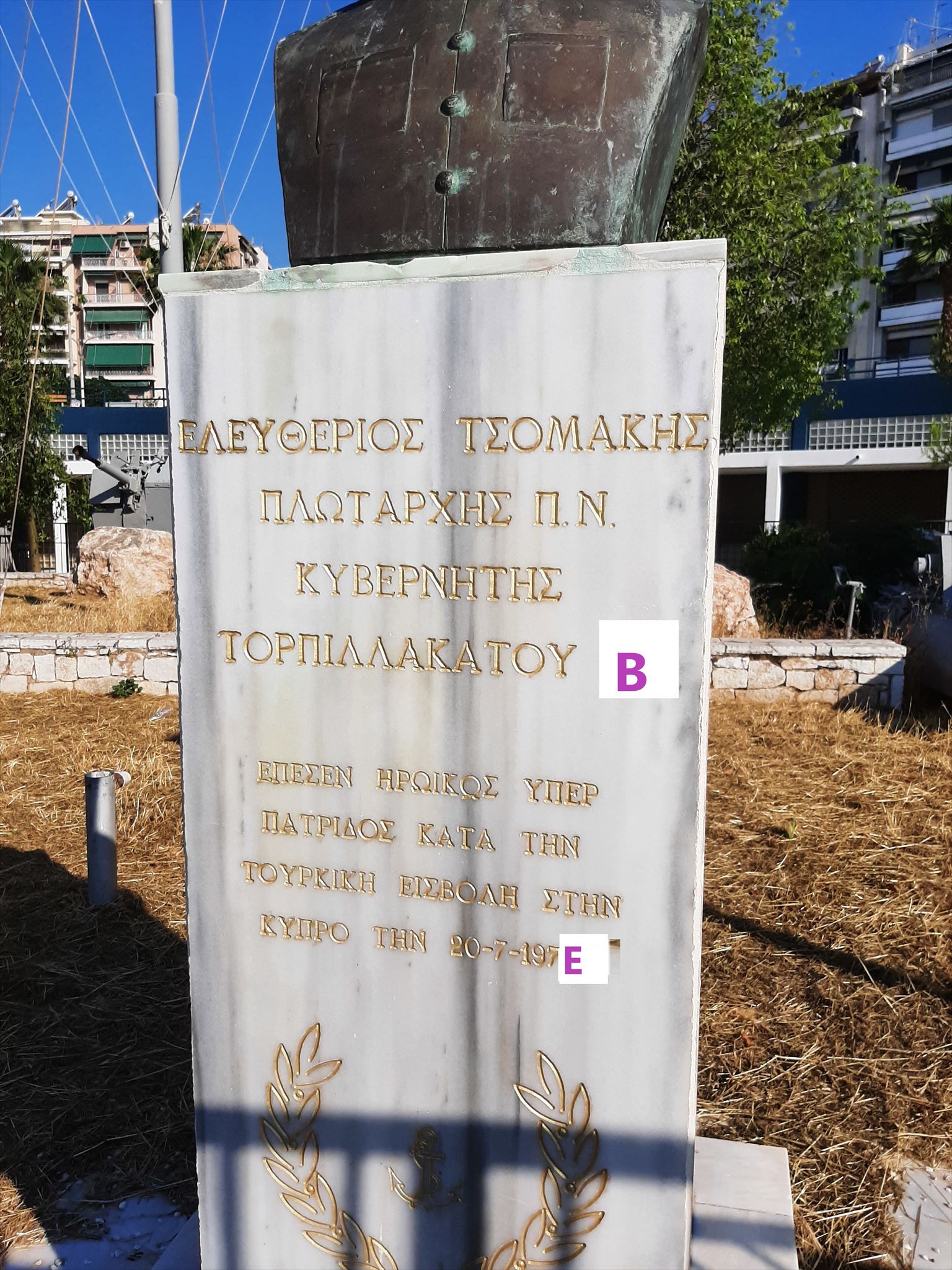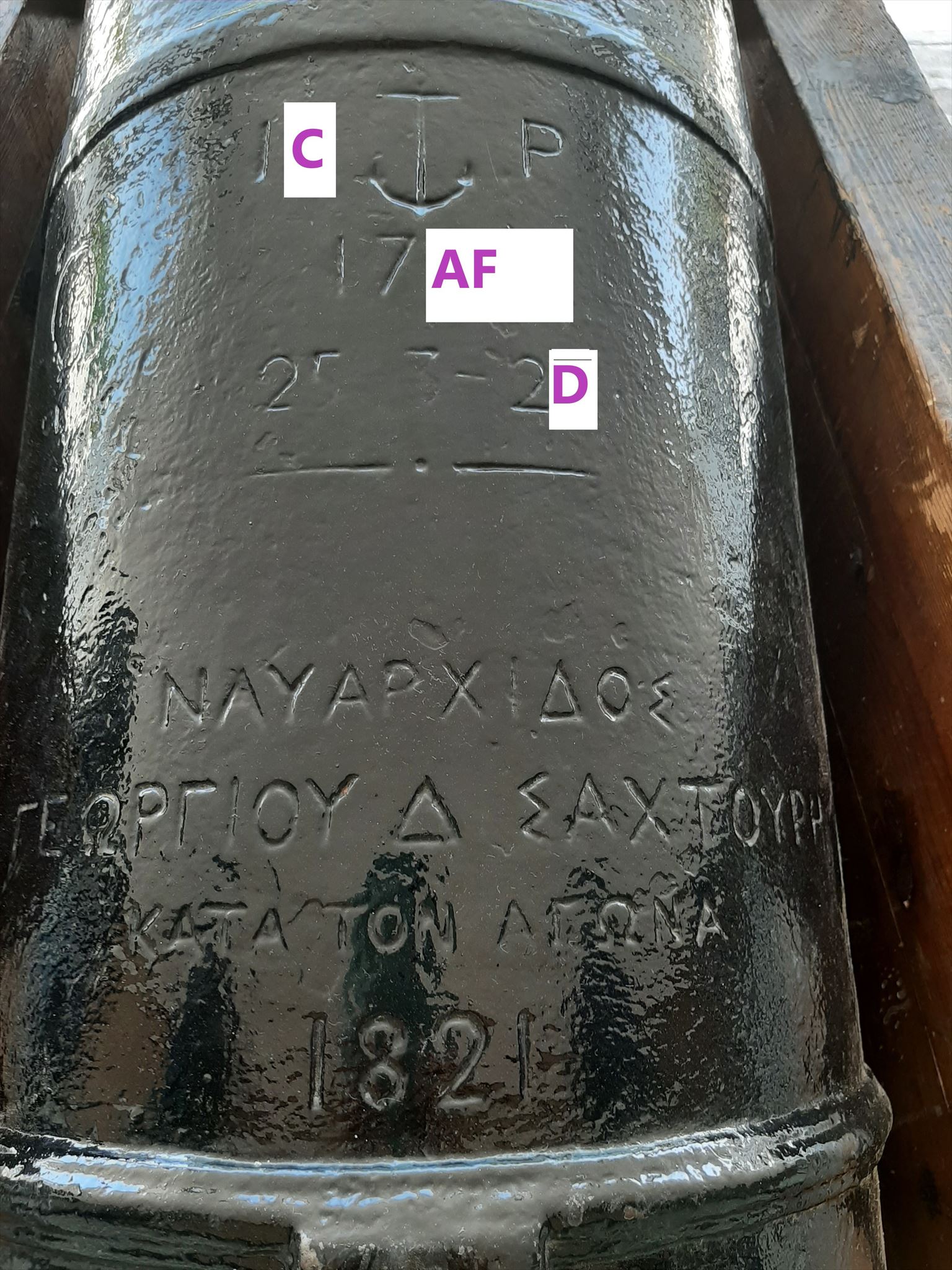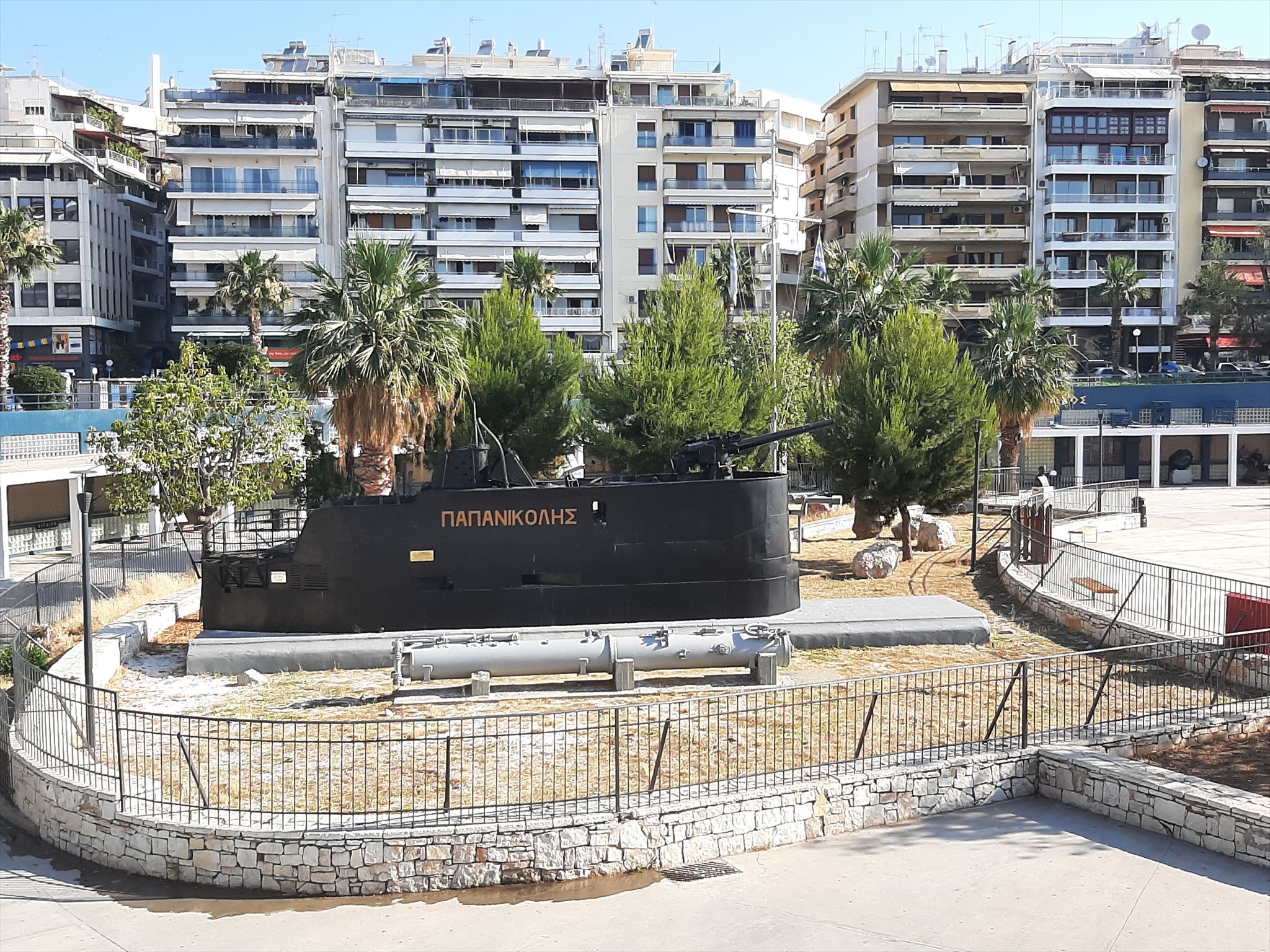
Η πρώτη προσπάθεια ίδρυσης του Ναυτικού Μουσείου Ελλάδος έγινε στο νεοσύστατο ελληνικό κράτος το 1867. Τη χρονιά εκείνη ο πλοίαρχος του Π.Ν. Γεράσιμος Ζωχιός, ιδρυτής του Ναυτικού Απομαχικού Ταμείου, εισηγήθηκε να αναλάβει το Ταμείο το έργο της συγκέντρωσης και διατήρησης των αντικειμένων, που έχουν σχέση με την ελληνική ναυτική ιστορία. Για λόγους σχετικούς με τις σοβαρές ιστορικές περιπέτειες της εποχής εκείνης η ιδέα δεν έλαβε συνέχεια.
Ωστόσο, η ιδέα του έμελλε να υλοποιηθεί ως ιδιωτική πρωτοβουλία, 82 χρόνια μετά. Την 7η Απριλίου του 1949 μία ομάδα έγκριτων πολιτών του Πειραιά μαζί με αξιωματικούς του Πολεμικού και Εμπορικού Ναυτικού, έχοντας ως κοινό δεσμό την αγάπη για τη θάλασσα και τα πλοία, συγκεντρώθηκε στο γραφείο του τότε υπουργού Ναυτικών Γεράσιμου Βασιλειάδη και υπέγραψε την ιδρυτική πράξη του σωματείου με την επωνυμία «Εταιρεία Ναυτικού Μουσείου και περισυλλογής κειμηλίων των κατά θάλασσαν αγώνων του Έθνους». Ήταν η γέννηση του Ναυτικού Μουσείου Ελλάδος. Πρώτος πρόεδρος ανέλαβε ο εφοπλιστής Γεώργιος Στρίγκος.
Το πρώτο οίκημα στο οποίο στεγάζεται το 1955, βρίσκεται στην Ακτή Μουτσοπούλου 18 στον λιμενίσκο της Ζέας (Πασαλιμάνι) και ανήκει στην Άννα Μ. Πιπινέλη. Εκεί τοποθετούνται πρόχειρα τα μέχρι τότε συγκεντρωθέντα εκθέματα, ενώ συνεχίζεται αδιάκοπα η προσπάθεια συγκέντρωσης ναυτικών κειμηλίων.
Το 1964 παραχωρήθηκε από τον Ο.Λ.Π. και στη συνέχεια από τον Ε.Ο.Τ. το οικόπεδο στο οποίο βρίσκονται σήμερα οι εγκαταστάσεις του Ναυτικού Μουσείου. Την ίδια εποχή ο αείμνηστος Κωνσταντίνος Κυριαζής επιχορηγεί την έκδοση του λευκώματος «Πλοία και Ναυμαχίες του ’21», από τις πωλήσεις του οποίου εξασφαλίστηκε το απαιτούμενο χρηματικό ποσό για την ανέγερση του ιδιόκτητου πλέον κτιρίου στην Φρεαττύδα. Μέχρι την αποπεράτωσή του, οι συλλογές του Μουσείου μεταφέρονται στο νεοκλασσικό κτίριο επί των οδών Μπουμπουλίνας και Κουντουριώτου. Τα εγκαίνια της νέας στέγης του Μουσείου πραγματοποιούνται στις 4 Αυγούστου 1969. Διαθέτει επιφάνεια εκθετηρίων χώρων περίπου 1.700 τ.μ. και στην είσοδό του έχει ενσωματωθεί ένα τμήμα των τειχών του Κόνωνος που προστάτευαν το αρχαίο λιμάνι.
Στις αίθουσές του εκτίθενται σήμερα περισσότερα από 2.500 αντικείμενα ταξινομημένα χρονολογικά και θεματικά, ζωντανεύοντας τη ναυτική ιστορία και παράδοση από την προϊστορική εποχή ως τις μέρες μας.
Στο χώρο του Μουσείου υπάρχει, επίσης, Ναυτική Βιβλιοθήκη ανοικτή στο κοινό κατά τις ημέρες και ώρες λειτουργίας του, η οποία διαθέτει περισσότερους από 17.000 τόμους βιβλίων και περιοδικών με κύριο θέμα τη ναυτική ιστορία, επιστήμη και τέχνη.
Στον εξωτερικό του χώρο έχουν τοποθετηθεί γλυπτά και σημαντικά υπαίθρια εκθέματα, όπως ο πυργίσκος του ιστορικού υποβρυχίου «Παπανικολής» και άγκυρες πλοίων της εποχής της Ναυμαχίας του Ναβαρίνου.
Από το 1993 έχει διοργανώσει σειρά εκπαιδευτικών προγραμμάτων που απευθύνονται σε ομάδες μαθητών όλων των εκπαιδευτικών βαθμίδων και έχουν ως στόχο τη βιωματική διδασκαλία της ναυτικής μας ιστορίας και παράδοσης αλλά και τη δημιουργική και άμεση επαφή των μαθητών με τις μουσειακές συλλογές.
Συμμετέχοντας σε εκθέσεις ναυτικού θέματος που περιοδεύουν σε ακριτικές περιοχές και νησιά αποτελεί έναν δυναμικό παράγοντα της πολιτιστικής ζωής της χώρας μας που ευαισθητοποιεί το κοινό στα θέματα προστασίας του θαλάσσιου περιβάλλοντος και προβάλλει τη ναυτική παράδοση στο εξωτερικό συμμετέχοντας σε συνέδρια και σεμινάρια, σε διεθνείς εκθέσεις και προγράμματα κοινοτικού χαρακτήρα που σκοπό τους έχουν την ανάδειξη της κοινής πολιτιστικής κληρονομιάς των λαών της Μεσογείου.
Επίσης, έχει αναπτύξει πλούσιο εκδοτικό έργο, κυρίως βιβλίων με θέματα σχετικά με την ελληνική ναυτική ιστορία και την έκδοση του τριμηνιαίου περιοδικού «Περίπλους της Ναυτικής Ιστορίας και Παράδοσης» με σκοπό την προώθηση της επιστημονικής έρευνας και την ευαισθητοποίηση του αναγνωστικού κοινού στη διαφύλαξη και συνέχιση της ναυτικής παράδοσης.
Οι τελικές συντεταγμένες / The final coordinates :
N 37° 55.ABC' E 23° 39.DEF'


Η Κρύπτη
Η κρύπτη είναι μαγνητική και περιέχει το logbook για την δήλωση για το geocaching.

The first attempt to establish the Hellenic Maritime Museum took place in the newly established Hellenic state in 1867. That year, the Hellenic Navy Captain Ferasimos Zohios, founder of the Naval Veterans Fund, suggested that the Fund takes up the task to collect and preserve the objects relating to the Hellenic Nautical History. Due to the serious historical adventures of that era, the idea was discontinued.
However, 82 years later, his idea was destined to be materialized on a private initiative. On the 7th of April 1949 a group of distinguished citizens of Piraeus acting together with Naval and Merchant Navy officers, bonded by their common love for the sea and the ships, assembled in the office of the then Minister of Shipping Gerasimos Vasiliadis and co-signed the founding Act of the organization with the name “Organization of Naval Museum and collection of the heirlooms of the Sea struggles of the Nation”. That was the birth of the Hellenic Maritime Museum. The shipowner Georgios Strigos took over as its first president.
The first building, in which H.M.M. was housed in 1955, was located at the Akti Moutsopoulou 18 at the small port of Zea (Pasalimani) and belonged to Mrs. Anna Pipineli. There, the collected exhibits up until that time were placed offhand, while the effort to collect nautical heirlooms was intensified.In 1964, the plot in which today the premises of the Hellenic Maritime Museum are located, was granted by ΟΛΠ and then by ΕΟΤ. At the same time the unforgettable Konstantinos Kyriazis subsidizes the album publishing “Ships and Naval Battles of ‘21”, from the sales of which the necessary amount of money was secured for erecting the privately owned building in Freattida. Until its completion, the collections of the Museum are transported at the neoclassical building located at the Bouboulinas & Kountouriotou streets. The inauguration of the new accommodation took place on August 4, 1969. It has surface area of showrooms of about 1,700 m2 and at its entrance a part of the KONON walls that protected the ancient harbor are incorporated.
In its showrooms today, more than 2,500 exhibits classified chronologically and thematically, revive the maritime history and tradition from the prehistoric era until today.At the Museum premises there is also a Nautical library open to the public during its working hours and days. The library has more than 17,000 volumes of books and magazines with a central focus on the maritime history, science and art.At the exterior space of the Museum sculptures and important outdoor exhibits have been placed, like the turret of the historical submarine “PAPANIKOLIS” and ship anchors from ships of the “NAVARINON” naval battle.
Since 1993, the Museum has organized series of educational programs targeted for groups of students of all educational levels that have as a primary aim the experiential training of our maritime history and tradition as well as the creative and direct contact of the students with the museum’s collections.
By participating in exhibitions of maritime issues that travel across the mainland and islands, the Museum constitutes a dynamic factor of the cultural life of our country that sensitizes the audience in matters of marine environment protection and projects the marine tradition abroad, participating in conferences and seminars, in international exhibitions and programs of a community nature, their purpose being to promote the common cultural heritage of the peoples of the Mediterranean.Furthermore, the Museum has developed a rich editorial work, mainly of books related with the Hellenic Maritime History and the publication of the quarterly magazine “Circumnavigation of the Maritime History and Tradition” aiming to promote the scientific research and raise the awareness of the readers at the preservation and continuation of the maritime tradition.
The Cache
The cache is magnetic and contains declaration sheet for the geocaching.